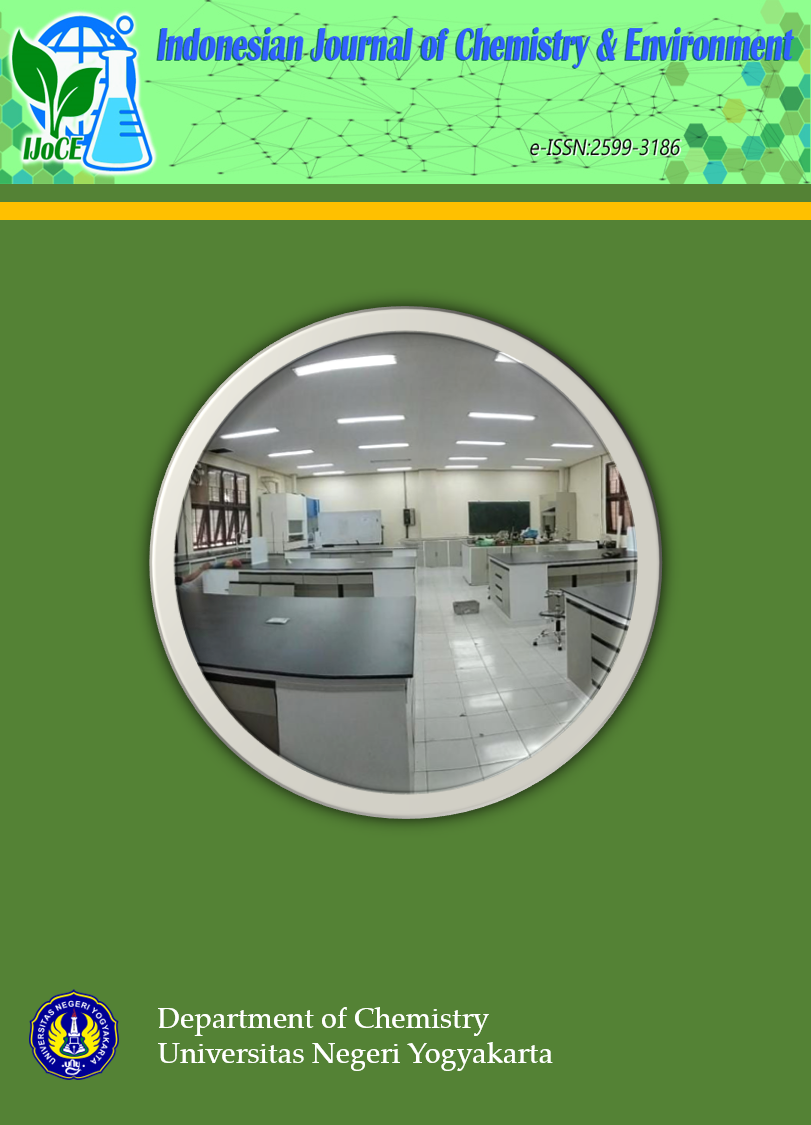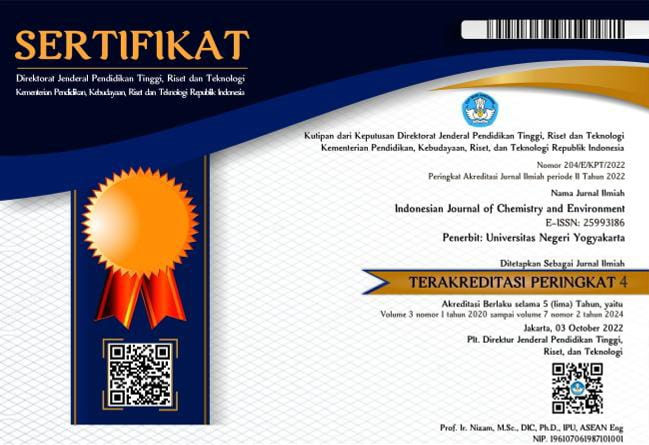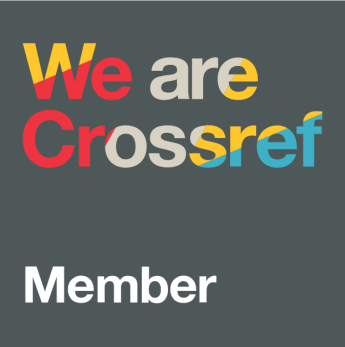Hydration Structures and Dynamics of In3+ Ion based on Classical Molecular Dynamics Simulation
DOI:
https://doi.org/10.21831/ijoce.v4i1.45297Abstract
The hydration structures and dynamics of In3+ ion have been studied using classical Molecular Dinamics (MD) simulation. The best basis sets were optimized to construct the 2-bodies, 3-bodies correction equations, and analysis of the trajectory file of the simulation results in the form of the parameter of a solvation structure such as RDF, CND, ADF, and dynamic properties, namely the migration of water ligands between the hydration shells. The results showed that the hydration structure of the In3+ ion is In(H2O)93+ and In(H2O)63+, respectively. The geometric arrangement of In3+ hydration obtained through the simulation of classical Molecular Dynamics 2-bd MM 2-bd corrected 3-bd effect is octahedral, which agrees with experimental data and shows the importance of 3-bd correction. The exchange of H2O ligands between the first and second shell or vice versa was not observed during the classical Molecular Dynamics simulation process (2-body + 3-body potential). The hydration structure of In3+ in the first shell was relatively stable.Downloads
Published
2021-11-21
How to Cite
[1]
Permana, N.A.A. and Suwardi, S. 2021. Hydration Structures and Dynamics of In3+ Ion based on Classical Molecular Dynamics Simulation. Indonesian Journal of Chemistry and Environment. 4, 1 (Nov. 2021), 15–22. DOI:https://doi.org/10.21831/ijoce.v4i1.45297.
Issue
Section
Articles
License
Authors who publish with this journal agree to the following terms:
- Authors retain copyright under a Creative Commons Attribution–ShareAlike License (CC BY SA) that allows others to share: copy, and redistribute the material in any medium or format, Adapt: remix, transform, and build upon the material, for any purpose, even commercially.
- Authors are able to enter into separate, additional contractual arrangements for the non-exclusive distribution of the journal's published version of the work (e.g., post it to an institutional repository or publish it in a book), with an acknowledgement of its initial publication in this journal.
- Authors are permitted and encouraged to post their work online (e.g., in institutional repositories or on their website) prior to and during the submission process, as it can lead to productive exchanges, as well as earlier and greater citation of published work.







